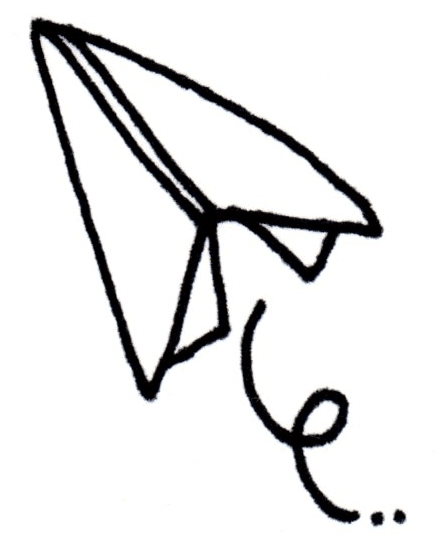Baby eczema triggers #6: Does teething trigger eczema?



Teething is a well known anecdotal trigger for flare-ups in pre-existing baby eczema. It’s not clear if the trigger for these flare-ups the stress associated with teething, aggravation by the excess droll associated with teething, the hormones which triggered the teething in the first place, or a combination of the three. Either way, if your baby’s eczema has a sudden, unexpected flare-up it’s worth trying to figure out if they are teething.
Is my baby teething?
There is a huge range of symptoms associated with teething, and a fair bit of disagreement between medical researchers as to which symptoms are genuinely teething-related. This list is ordered by the prevalence of the teething symptoms and based on 16 robust studies of teething in children from 0-3 years old 1.
- Sore, red gums possibly with blue-grey blisters over the new tooth
- Cranky, irritable baby who is unable to settle
- A sudden increase in drooling
- Sucking or chewing fingers and putting even more than usual into their mouth
- Loss of appetite, particularly for solid food
- Sleep disturbance
- Runny nose
- High temperature, especially on the day the tooth finally arrives
- Nasty nappies
- Red cheeks, possibly only on one side
- Ears rubbing
Symptoms tend to be more severe in low birth weight babies and the appearance of canine teeth tends to be associated with a bigger loss of appetite than other teeth 2. The good news is that the teething symptoms tend to get easier with age 1.

When do teeth come through?
Here’s a cool fact: babies’ teeth started growing before they are born. In fact, some babies are born with teeth already through. In most cases, teeth will appear at around 5 months old, with a full set of primary teeth through by 33 months. Teeth tend to come through in pairs, usually with the bottom front teeth coming through first.
How long do symptoms last?
Don’t be alarmed, teething isn’t non-stop from five to 33 months. Teething symptoms typically start 5 days before the tooth appears and last for 3 days after that, so you’re looking at a total of 8 days per tooth 2.
Drooling and eczema: Teething rash
The drooling associated with teething can wreak havoc with sensitive skin. The constant dampness irritates the skin around the mouth, neck and chest and can cause an angry red rash. If your baby uses a dummy, the rash may be worse. This rash is usually known as teething rash and is typically flat or slightly raised red patches with tiny bumps. The skin may also become chapped.
The obvious solution is to keep your little one’s face dry by wiping up drool as soon as it appears and to limit the use of any dummies, but that isn’t always practical. Smearing a barrier cream like Vaseline around the mouth, chin and neck protects the skin. If you’d rather use a non-petroleum based product, coconut oil works too. Using a bib, especially a bandana style bibs, keeps the chin and chest dry. But bibs get soaked really quickly, so remember to keep switching for a dry one.
Teething rash isn’t usually anything to worry about but do contact your GP if it:
- suddenly gets worse
- is accompanied by a fever, especially if your child is under 6 months old
- starts weeping or bleeding
How to treat teething-related eczema flare-ups
Treating a teething-related eczema flare-up is much like treating any other flare-up of your little one’s eczema. The only real difference is keeping on top of any teething rashes and dealing with a cranky baby that is both itchy and has a sore mouth.
- Keep up with your emollient regime, even if your little one is really unsettled.
- Consider using a barrier cream like Vaseline around you little one’s mouth and chin to protect the skin from drool before any teething rash appears.
- If sleeping is a problem, ask your GP if they will prescribe antihistamines to help reduce the itching.
- Try to keep skin as intact as possible. The extra drool can result in infections getting in through broken skin – ScratchSleeves can help here.
- Let your daily routine slip if it needs to. If you end up spending all day on the sofa cuddling your baby and watching daytime TV, don’t worry about the hoovering. If your baby is sleeping at school pick-up time, ask another school mum to pick up older kids. It’s only for a week (although it may well feel like a lot longer!)
- Don’t panic – teething related eczema flare-ups tend to subside a few days after the teeth appear.
Tried and tested teething remedies
Teething remedies are one of those things that everyone has advice about. Our advice: all kids are different, go with what works for yours. That said, there has been a clinical study on the most effective teething remedies 1. It won’t come as a huge surprise that none of the remedies completely solved the problem, but the ranking of the remedies is interesting:
- The top spot goes to teething rings – which mirrors our experience. The study used a solid plastic ring but these teething keys that go in the fridge and have a solid plastic ring as well worked brilliantly for us.
- Interestingly, the second spot went to cuddles, reassurance and distractions like singing, playing games and reading stories.
- Gum massage came in third place: this is rubbing the sore gum with a clean fingertip or very soft toothbrush for 1-2 minutes.
The other remedies included in the study were icing the gums and cold foods for chewing on. There is more helpful advice on teething remedies on the NCT website.
And a note about keeping new teeth clean
The NHS advises cleaning your baby’s new teeth twice a day with baby toothpaste. Most toothpaste contain sodium laureth sulphate (SLS) which can aggravate eczema. We use Oranurse toothpaste, which is both SLS and flavour-free.
Our sources
- Signs and Symptoms of Primary Tooth Eruption: A Meta-analysis C. Massignan, M. Cardoso, A. L. Porporatti, S. Aydinoz, G. De Luca Canto, L. A. Mendonça Mezzomo and M. Bolan Pediatrics March 2016, 137 (3) https://pediatrics.aappublications.org/content/137/3/e20153501.long#ref-36
- Signs and symptoms associated with primary tooth eruption: a clinical trial of nonpharmacological remedies. M. Memarpour, E. Soltanimehr, T. Eskandarian. BMC Oral Health. 2015 Jul 28;15:88 https://www.ncbi.nlm.nih.gov/pubmed/26215351
- Teething advice from the NHS: https://www.nhs.uk/conditions/pregnancy-and-baby/teething-tips/
- Great advice on teething remedies from the NCT: https://www.nct.org.uk/baby-toddler/teething/easing-pain-toys-and-remedies-for-teething-babies
Our editorial policy
Here at ScratchSleeves, we aim to bring you trustworthy and accurate information. We collaborate with qualified dermatologists and doctors as well as drawing on peer-reviewed medical studies and our own experience as parents. All medical content is reviewed by a dermatologist or appropriate doctor prior to publication to ensure completeness, accuracy and appropriate use of medical language. Reviewer details can be found at the bottom of each reviewed post and also on our ‘Meet The Team’ page.
All scientific research referred to in our blog is found in peer-reviewed publications. All eczema related medical articles we refer to are included in the GREAT database (Global Resource of Eczema Trials) managed by the Centre of Evidence Based Dermatology at the University of Nottingham. This database brings together information on all randomised control trials and systematic reviews of eczema treatments. Trials are identified using a highly sensitive, comprehensive search strategy that is compatible with standard Cochrane methodology. Cochrane is internationally recognised as the highest standard in evidence-based health care. Links to the publications we refer to are listed at the bottom of each article.
Disclaimer
The original editorial information we provide is not intended to be a substitute for professional medical advice, diagnosis, or treatment. Always seek the advice of your doctor or other qualified healthcare practitioners regarding a medical condition. Never disregard professional medical advice or delay in seeking it in because of anything you have read on the ScratchSleeves blog.
As well as sharing our experience of bringing up an eczema child (and favourite allergy-friendly recipes), ScratchSleeves also manufacture and sell our unique stay-on scratch mitts and PJs for itchy babies, toddlers and children. We now stock sizes from 0-adult in a range of colours. Visit our webshop for more information.
The Calm Skin Guide
Love our blog? It's also available in book format with:
- First hand accounts from parents & medical professionals
- Easy navigation
- Comprehensive index
- Additional material
Signed copies available at no extra cost
Written by:
Interesting article? Don't keep it to yourself...
Read next...
You may also find helpful...
Quick buy


Multi Buy Discount

Spend between £30 - £60 and save 5%
Spend between £60 - £120 and save 10%
Spend over £120 and save 15%
Discount automatically applied at checkout
No Quibbles Guarantee

ScratchSleeves abide by a no quibbles guarantee.
Free UK Postage

Free packing and postage on all UK orders. For overseas orders to Europe postage is from £3.50, to USA is £6.50 and to the rest of the world, from £3.75.






